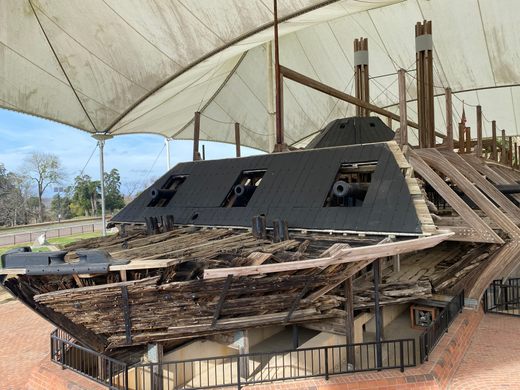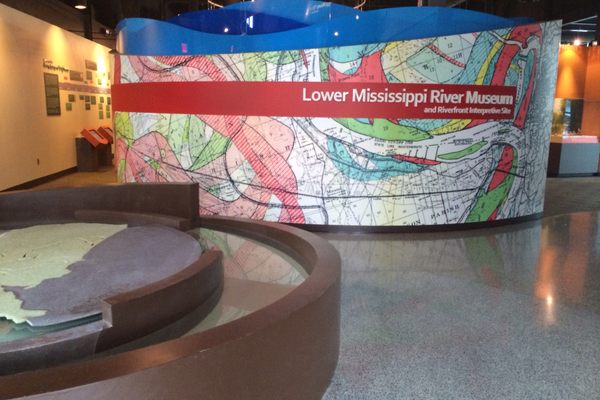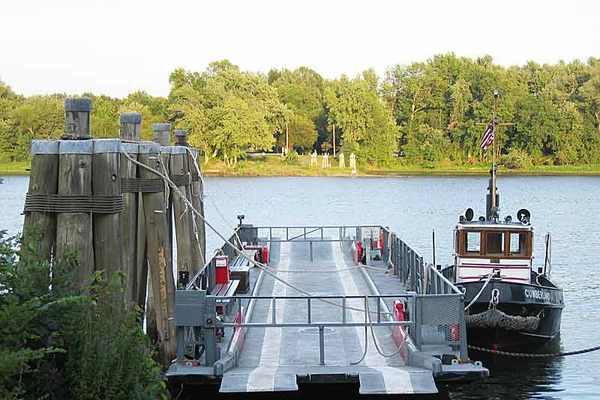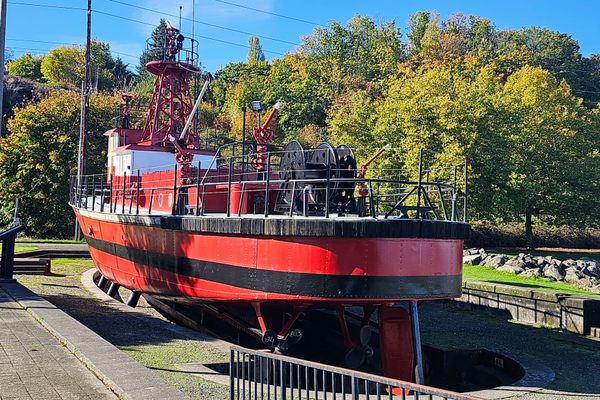U.S.S. Cairo
This iron and wood Civil War city-ship was the first vessel to be sunk by an electrically detonated torpedo.
Designed by engineer James B. Eads, the gunboat U.S.S. Cairo was one of seven imposing iron and wood behemoths developed for service on major rivers during the American Civil War. Despite being brought down by one of the world’s first torpedoes the ship is still on display under a large white tent at the Vicksburg National Military Park.
U.S.S. Cairo, a 512-ton “City” class ironclad river gunboat built at Mound City, Illinois, was commissioned in January 1862 as part of the U.S. Army’s Western Gunboat Flotilla. She began war operations in February, taking part in the occupations of Clarksville and Nashville, Tennessee. In April and May 1862, the Cairo was involved in the campaign to capture Fort Pillow and was present during the May 10th naval action there. She was also engaged with Confederate warships during the action off Memphis, Tennessee, on June 6th,1862.
Cairo continued her operations on the Mississippi River and its tributaries and was formally transferred to the Navy in October. On December 12th, 1862, while engaged in mine clearance activities on the Yazoo River, Mississippi, Cairo was sunk by an electrically detonated Confederate mine (or “torpedo”, as mines were then known). The Cairo was the first boat to be sunk by the new-fangled electrical torpedo technology.
Her wreck was recovered in 1965, but was badly damaged during the salvage efforts when the lines being used to haul up the wreck sliced into the wooden hull. In the end the ship had to be split into three pieces and reconstructed later. Today the sturdily constructed ironclad is one of only four surviving ships of its kind, and can be visited under its tent enclosure at the Vicksburg National Military Park.
Know Before You Go
From the east — Take Interstate 20 west to Vicksburg, Mississippi. Use exit ramp 4B. Follow Clay Street (US-80) west 0.25 miles to park entrance.
From the north — Take Interstate 55 south to Jackson, Mississippi. (To save time, use Interstate 220 bypass on west side of Jackson.) Take Interstate 20 west to Vicksburg (approximately 40 miles). Use exit ramp 4B. Follow Clay Street (US-80) west 0.25 miles to park entrance.
Community Contributors
Added by
Edited by
The Atlas Obscura Podcast is Back!





































Follow us on Twitter to get the latest on the world's hidden wonders.
Like us on Facebook to get the latest on the world's hidden wonders.
Follow us on Twitter Like us on Facebook